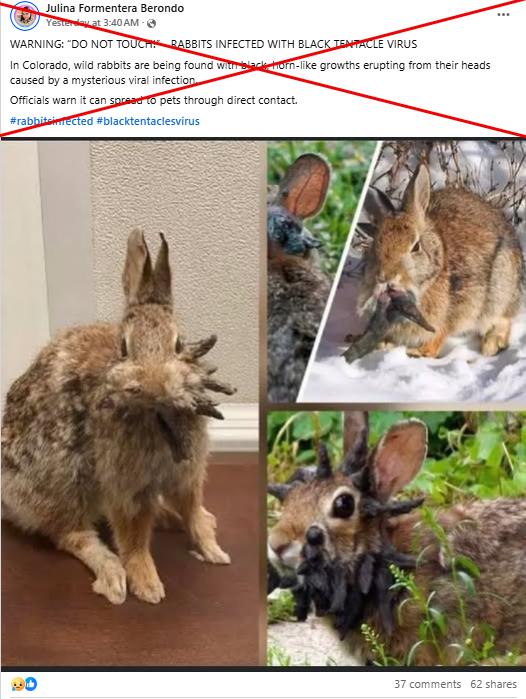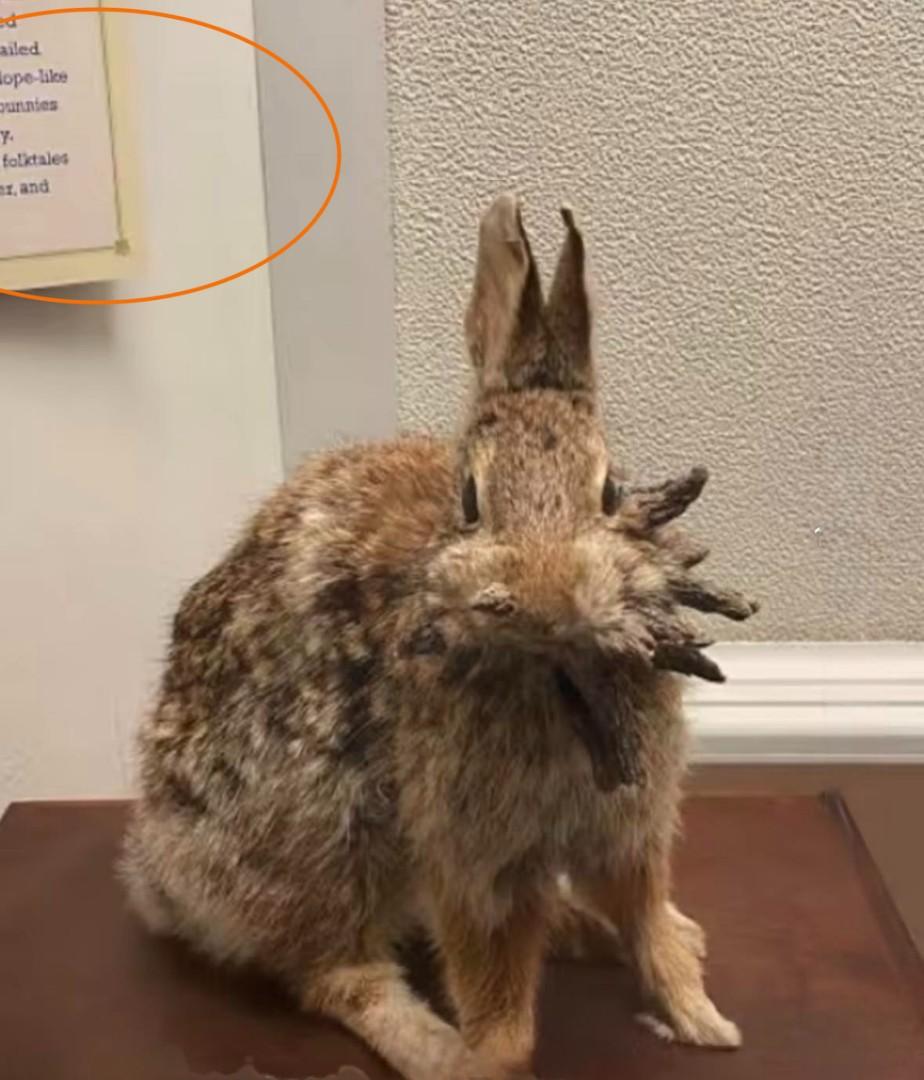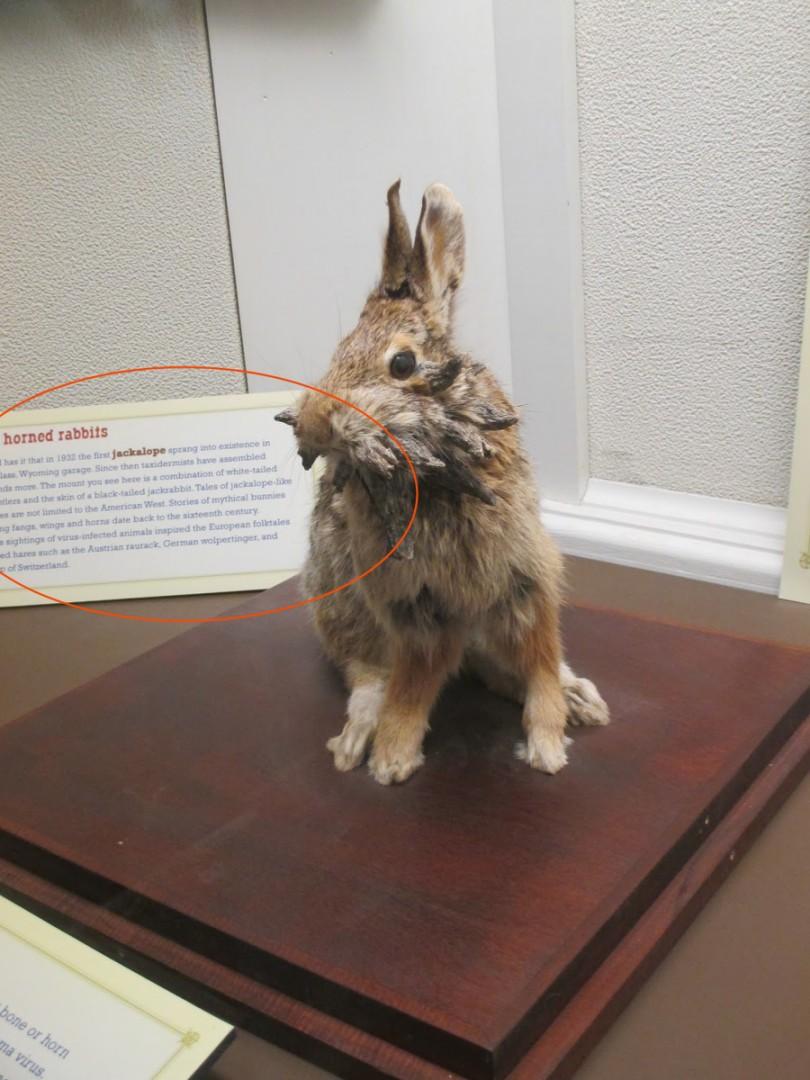
Panic spreads over exaggerated claims of 'tentacled' rabbits invading US
- Published on August 15, 2025 at 22:50
- 4 min read
- By Manon JACOB, AFP USA
"WARNING: 'DO NOT TOUCH!' - RABBITS INFECTED WITH BLACK TENTACLE VIRUS," says an August 14, 2025 Facebook post sharing dramatic photos of rabbits with thick, spiky growths on their heads.
"In Colorado, wild rabbits are being found with black, horn-like growths erupting from their heads caused by a mysterious viral infection. Officials warn it can spread to pets through direct contact. #rabbitsinfected #blacktentaclesvirus."

The images circulated widely across social media, with some posts suggesting that people shoot the infected animals if encountered in the wild.
"If I see tentacles sprouting out of somebody's head because they decided to touch one of the ... rabbits, click clack boom," a person says in an August 13 video viewed over 12,000 times on TikTok.
Computer-generated images of bunnies with tentacles coming out of their noses later started spreading online.
But wildlife experts told AFP that while the posts reference a real disease, they are exaggerated (archived here). The condition is not new and does not pose a serious threat to humans or other animal species.
The reported sightings likely stem from the same few rabbits being spotted by different residents, Colorado wildlife services said, and most rabbits can live normally with the condition, which occasionally clears on its own.
Advanced cases of the condition have been documented over the years.
AFP was, for instance, able to identify the rabbit in one of the pictures shared online as a taxidermied cottontail from the University of Kansas Natural History Museum's collection by matching the background to that of a photo from a 2015 history blog (archived here).


'Same rabbits'
Kara Van Hoose, northeast region public information officer for Colorado Parks and Wildlife, told AFP on August 13 that the pictures likely show an outbreak of Shope papillomavirus in the Fort Collins area (archived here and here).
"We have started to take more reports of rabbits in the northern Colorado area affected with the virus since photos were first published last Friday," she told AFP August 13.
"We're up to maybe a dozen or so reports, but it's most likely people reporting the same rabbits and not a dozen rabbits infected."
The disease, spread through biting insects including fleas and ticks, causes wart-like growths, usually on the face and neck of rabbits.
The animals can also clear the virus from their systems on their own in most cases, which remain benign.
"We would be concerned only if the growths are on the eyes or impede the rabbit's ability to eat," Van Hoose said.
The growths on rabbits have been observed in the United States for well over a hundred years, experts say, and were first documented by Richard Shope in 1933 (archived here).
The cases are even thought to have inspired the American myth of the "jackalope" (archived here).
"Using historical specimens in mammal collections here at the University of Kansas, we have been able to recover the virus from a hundred-year-old preserved specimen of an eastern cottontail," said Robert Timm, an associate professor emeritus from the University of Kansas who has studied the disease in rabbits (archived here).
Not dangerous to humans
Timm also dismissed the claims that the August 2025 sightings amount to a "recent invasion" that could threaten humans.
"The virus has been in the environment for perhaps tens of thousands of years," he said August 14.
Colorado Parks and Wildlife does not recommend killing the infected rabbits if found in nature, but "as with any wildlife, pets should not interact or come in contact with the rabbits," Van Hoose said.
Karen Fox, a pathologist at the Colorado State University Veterinary Diagnostic Lab (archived here), confirmed the virus does not affect humans, dogs, or cats.
Domesticated bunnies, however, are at risk of catching the virus from a wild infected specimen.
Fox cautioned the disease "is often more severe in pet rabbits than in wild rabbits."
"The best way to prevent infections in pet rabbits is to keep pet rabbits indoors, especially during the summer and fall months when insect activity is highest," she told AFP on August 15.
According to University of Kansas's Timm, there are no known cases of this virus ever being transmitted to humans either from mosquitoes or rabbits.
AFP previously investigated other claims about wild animals and viruses.
Copyright © AFP 2017-2025. Any commercial use of this content requires a subscription. Click here to find out more.
Is there content that you would like AFP to fact-check? Get in touch.
Contact us
